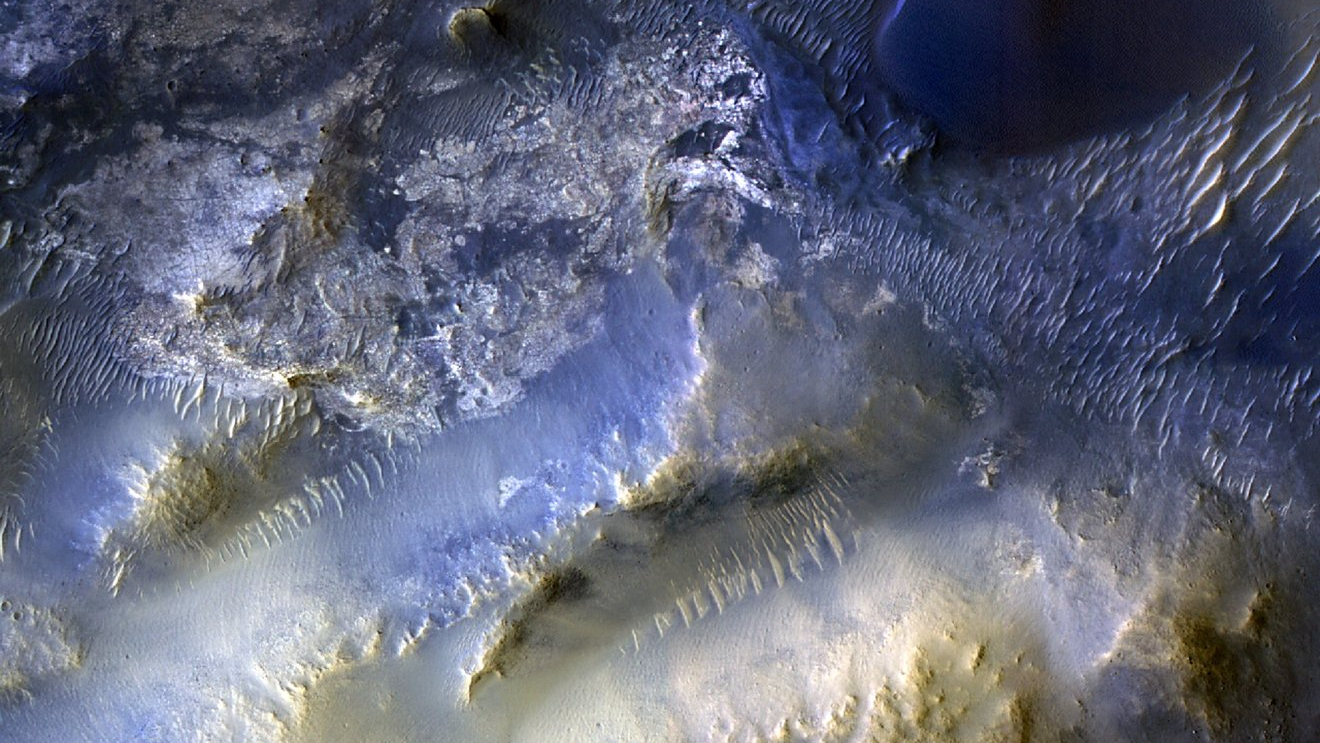James Webb Space Telescope images: 16 astonishing views of our universe (gallery)
Images from the JWST have been flooding in since the observatory started operations.
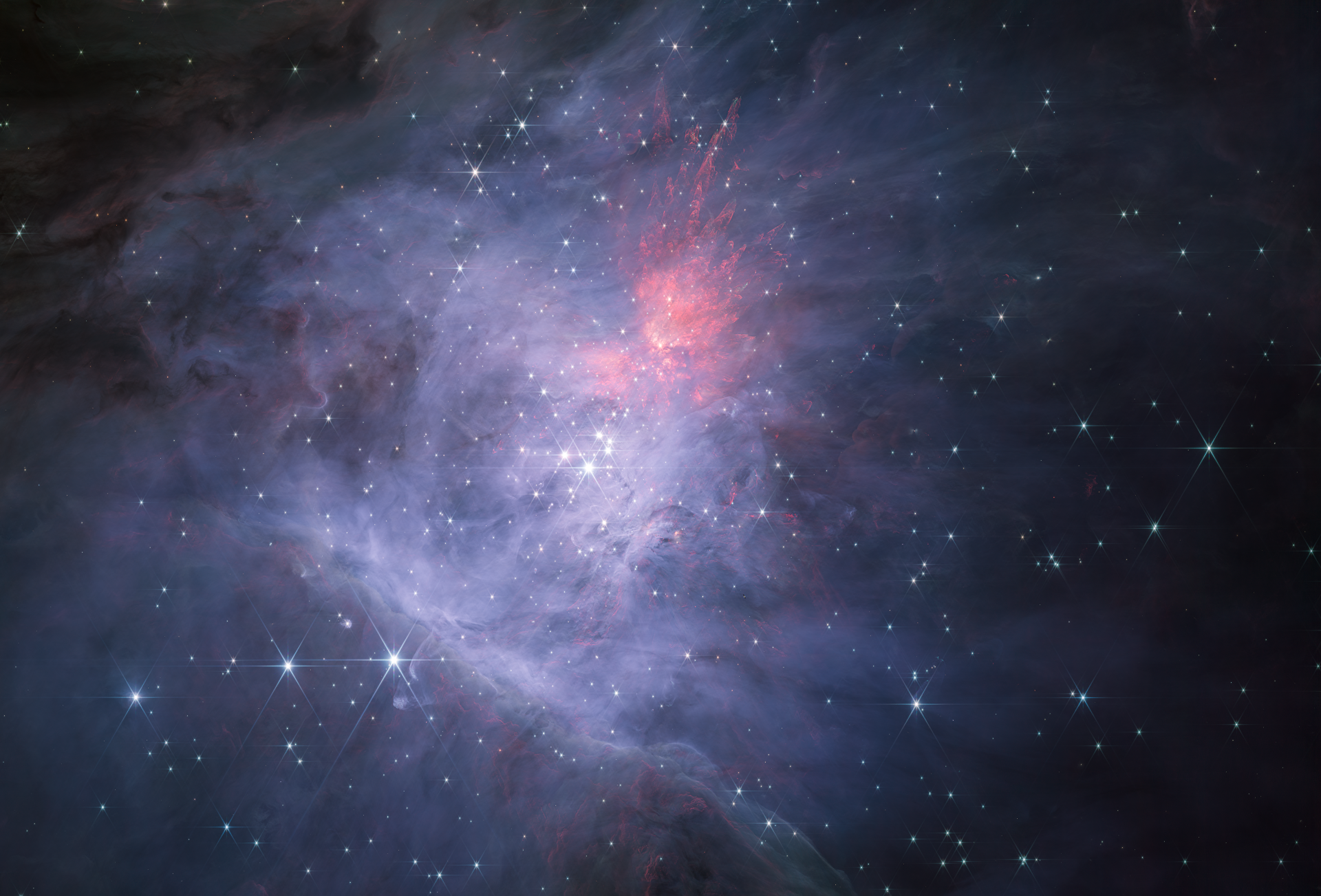
The James Webb Space Telescope has captured two breathtaking wide-field mosaics of the majestic Orion Nebula, a vast star-forming region and one of the nearest stellar nurseries to our solar system, located just 1,344 light-years away.
The huge mosaics, made of over 3,000 individual images, have also been added to the European Space Agency's ESASky app, which is an interactive all-sky map with a user-friendly interface that enables members of the public to view amazing images of the universe taken by the likes of the James Webb Space Telescope (JWST) and the Hubble Space Telescope.
Read more: James Webb Space Telescope's stunning mosaic of Orion Nebula uncovers rogue planets (photos)
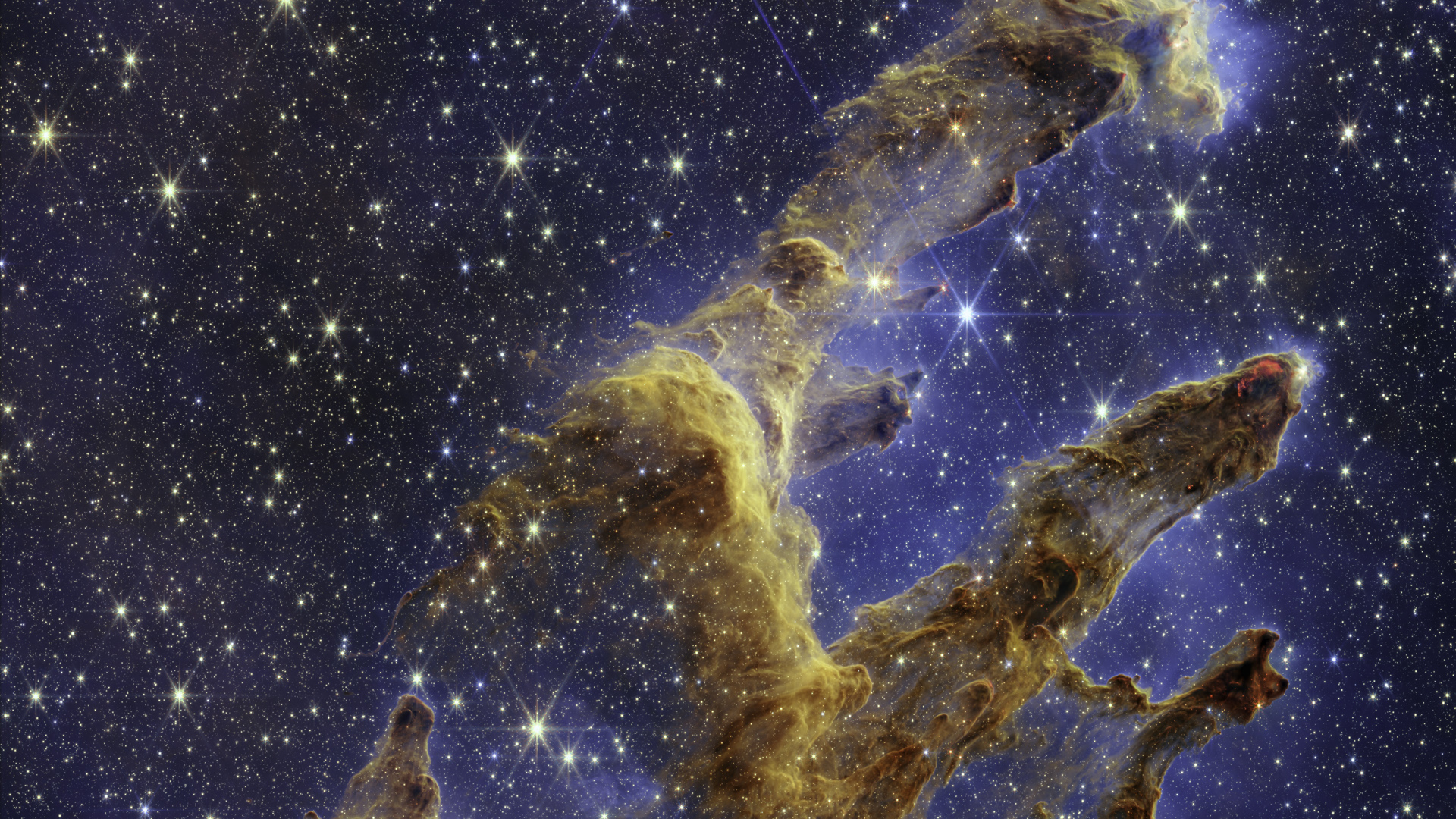
NASA's $10 billion James Webb Space Telescope (JWST) launched on Dec. 25, 2021, from Europe's Spaceport in French Guiana. Since it arrived at its new cosmic home, Lagrange Point 2, on Jan. 24, 2022, the infrared observatory has been busy sharing some truly breathtaking views of the cosmos.
JWST, the largest and most powerful space telescope to date, released its first scientific images on July 12, 2022, but it didn't stop there.
The next-generation observatory continues to beam back jaw-dropping images. We explore some of the best of them here. You can scroll through the gallery using the navigation arrows above.
When JWST turned its attention to the iconic Pillars of Creation, the observatory showed the famous dust clouds in remarkable detail. Located in the constellation Serpens, approximately 7,000 light-years from Earth, the Pillars of Creation are part of the Eagle Nebula.
The vast clouds of gas and dust were famously photographed by the Hubble Space Telescope in 1995, bringing their remarkable beauty to light. The new photograph obtained by JWST reveals the pillars in even more detail and clarity. Hundreds of previously invisible stars shine throughout the image, some born only a few hundred thousand years ago.
Read more: Magnificent Pillars of Creation sparkle in new James Webb Space Telescope image
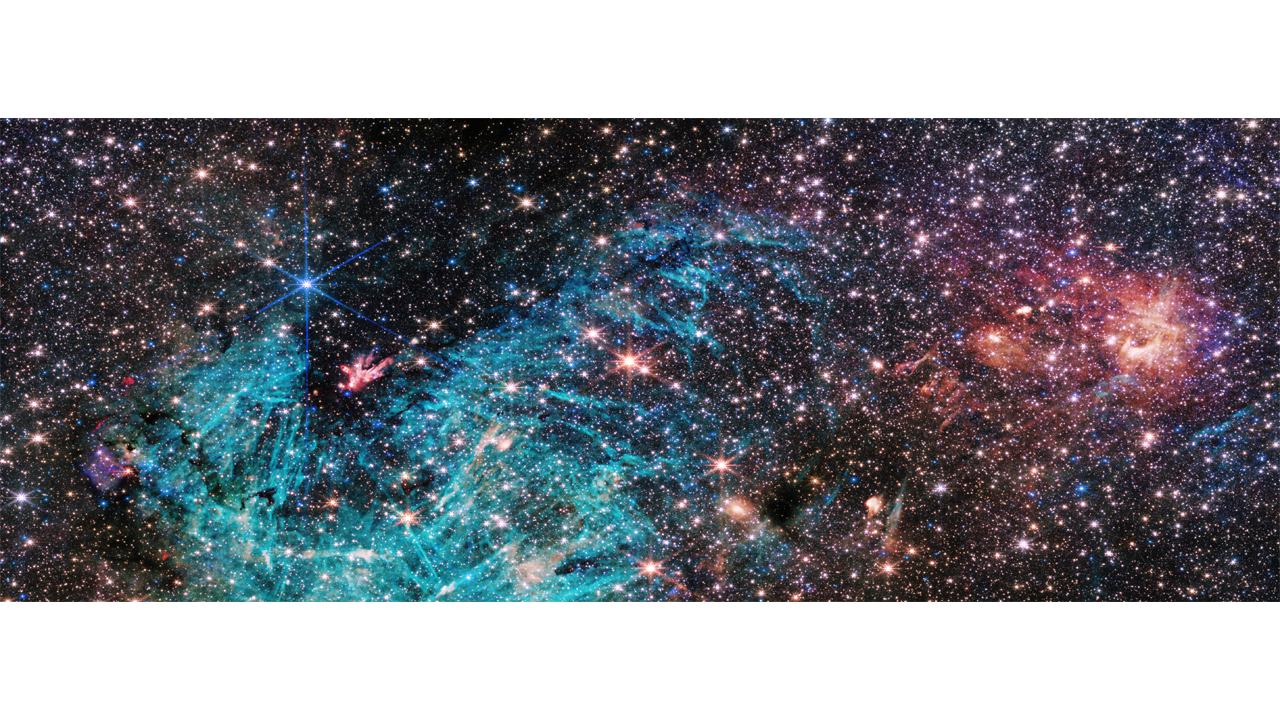
The full view of the James Webb Space Telescope's NIRCam (Near-Infrared Camera) instrument reveals a 50 light-years-wide portion of the Milky Way's dense center.
An estimated 500,000 stars shine in this image of the Sagittarius C (Sgr C) region, along with some as-yet-unidentified features.
The region of intense star formation lies just 300 light-years from the supermassive black hole sitting at the center of our galaxy, Sagittarius A*.
Read more: James Webb Space Telescope sees major star factory near the Milky Way's black hole (image)

Here, JWST has captured mysterious concentric rings surrounding a distant star that have scientists rather baffled. The star at the center of the image is known as WR140, a Wolf-Rayet star that has ejected most of its hydrogen into space and is surrounded by dust.
Mark McCaughrean, an interdisciplinary scientist in the JWST Science Working Group and a science advisor to the European Space Agency, called the feature "bonkers" in a Twitter thread.
"The six-pointed blue structure is an artifact due to optical diffraction from the bright star WR140 in this #JWST MIRI image," he wrote. "But red curvy-yet-boxy stuff is real, a series of shells around WR140. Actually in space. Around a star."
Read more: Mysterious rings in new James Webb Space Telescope image puzzle astronomers

This mind-bending JWST image of the galaxy cluster known as El Gordo gives us another mesmerizing view of the universe.
One subject, for instance, is known as "El Anzuelo," or "The Fishhook." Located 10.6 billion light-years away, this galaxy can be clearly seen toward the top right of the image as a bright red arc. To put into perspective how trippy this new photo is, you're seeing El Anzuelo as it was 10.6 billion years ago. This is because it took that long for light from this point in the galaxy's life to reach the JWST.
Read more: James Webb Space Telescope unveils the gravitationally warped galaxies of 'El Gordo'

In this image, which was released on Nov. 16, 2022, a fiery cosmic hourglass conceals a fledgling star, or protostar, at its heart. The blazing scene had been hidden from telescopes by a dense, dark cloud of gas and dust known as L1527 and is only visible in infrared light. The Near Infrared Camera (NIRCam) aboard JWST revealed the formation within the Taurus star-forming region in all its glory.
Read more: Fiery James Webb Space Telescope image shows the early days of star formation

Pandora's Cluster, located around 3.5 billion light-years away, shines in unprecedented detail in this image captured by the JWSTs powerful Near-Infrared Camera (NIRCam) and the Near-Infrared Spectrograph (NIRSpec) instruments as part of the Ultradeep NIRSpec and NIRCam Observations before the Epoch of Reionization (UNCOVER) program. This created one panoramic image featuring a stunning 50,000 sources of infrared light.
Read more: James Webb Space Telescope opens Pandora's Cluster in stunning image with help from Einstein (video)

JWST's first image of Neptune shows the ice giant in spectacular detail — rings and all! The image gave astronomers the best look at Neptune in 32 years, since NASA's Voyager 2 spacecraft flew past during its journey out of the solar system.
The bright patches in Neptune's southern hemisphere are high-altitude ice clouds reflecting sunlight before the methane in the clouds absorbs it.
Read more: James Webb Space Telescope captures stunning image of Neptune's rings and moons
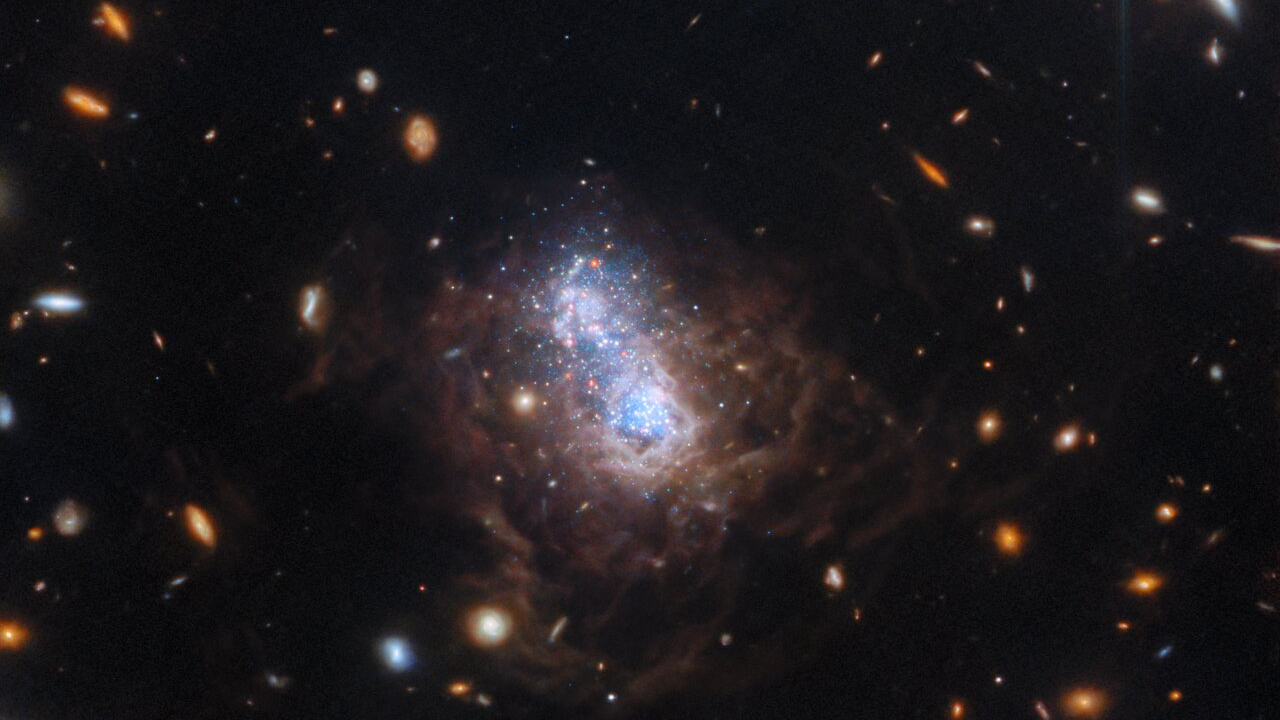
A small galaxy bursts with star formation in this dazzling image from the James Webb Space Telescope.
The galaxy, called I Zwicky 18 (I Zw 18), is located roughly 59 million light-years from Earth. It is classified as a dwarf irregular galaxy, meaning it's much smaller and less structured than our Milky Way galaxy.
The James Webb Space Telescope's Observations of I Zw 18 suggest the galaxy has gone through several sudden bursts of star formation, creating two distinctly bright regions of white and blue stars at its core.
Read more: Gorgeous James Webb Space Telescope image captures sparkling stars, old and new
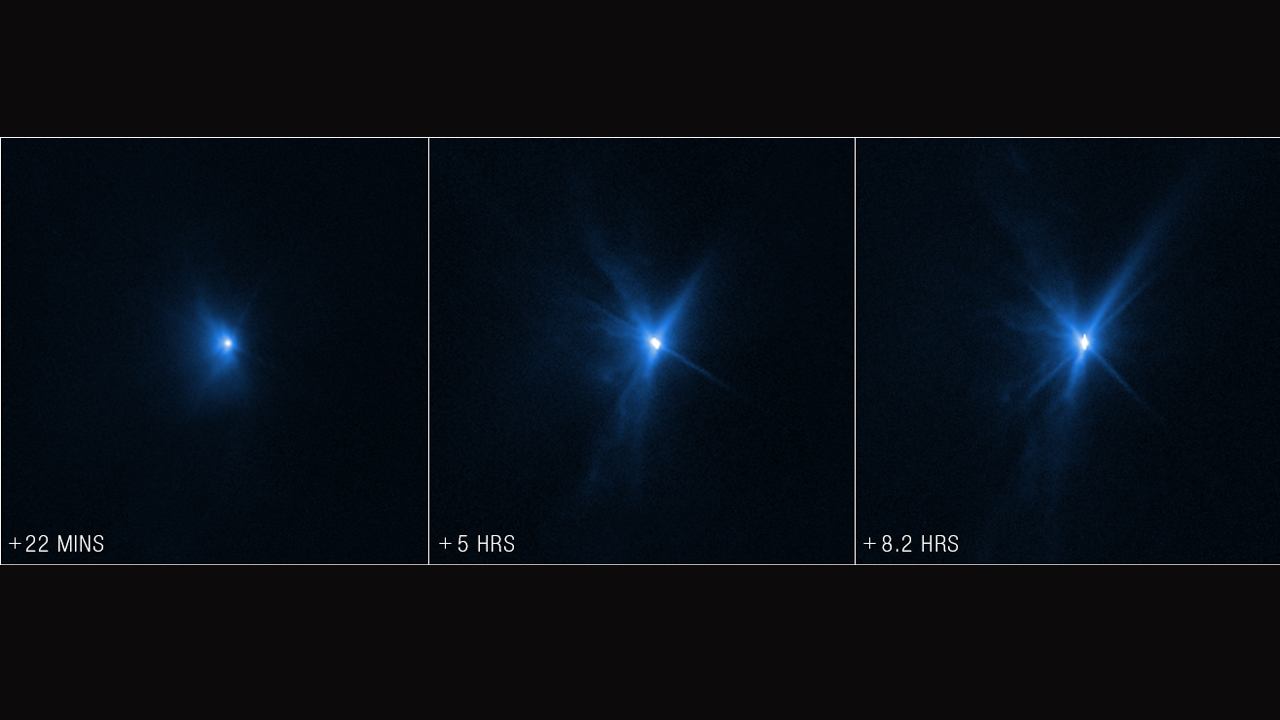
On Sept. 26, 2022, NASA's Double Asteroid Redirection Test (DART) smashed a probe into an asteroid moonlet called Dimorphos to shift the space rock's orbit. Dimorphos is part of a binary system that includes the larger space rock Didymos.
JWST watched the action unfold and captured a series of images showing how the Didymos-Dimorphos asteroid system brightened after the DART spacecraft hit the harmless moonlet.
Read more: DART asteroid crash seen by James Webb, Hubble space telescopes (photos)
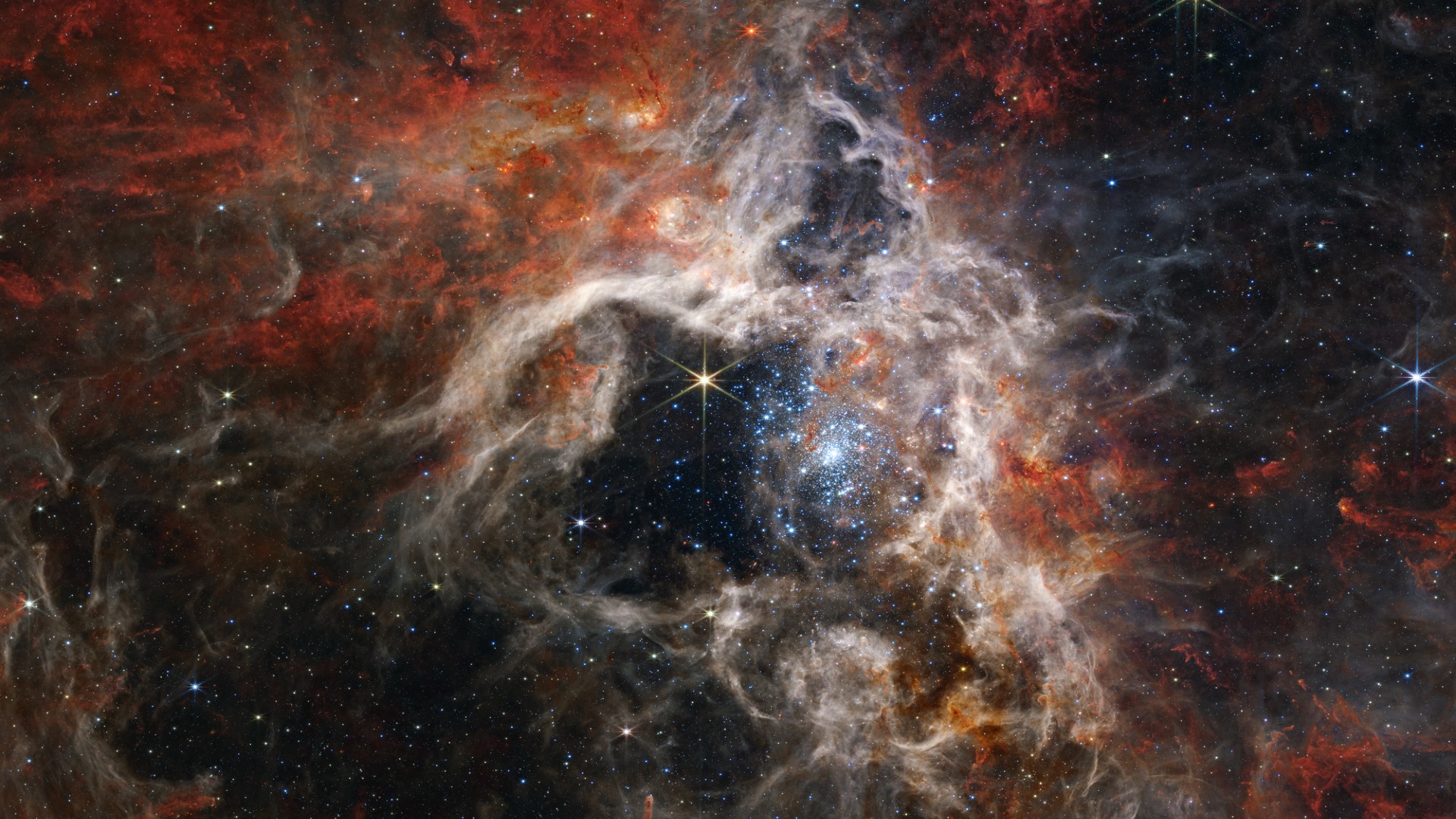
In this captivating image, never-before-seen young stars in the Tarantula Nebula, formally named 30 Doradus, are revealed for the first time. JWST's high-resolution infrared camera shows the stellar nursery in exquisite detail, as well as distant background galaxies.
The Tarantula Nebula is located approximately 161,000 light-years away in the Large Magellanic Cloud. It is of interest to astronomers studying star formation because the nebula has a similar chemical composition to star-forming regions from when the cosmos was just a few billion years old. The Tarantula Nebula gives astronomers a unique view into how stars formed in the relatively early universe.
Read more: James Webb Space Telescope snaps mind-boggling image of Tarantula Nebula
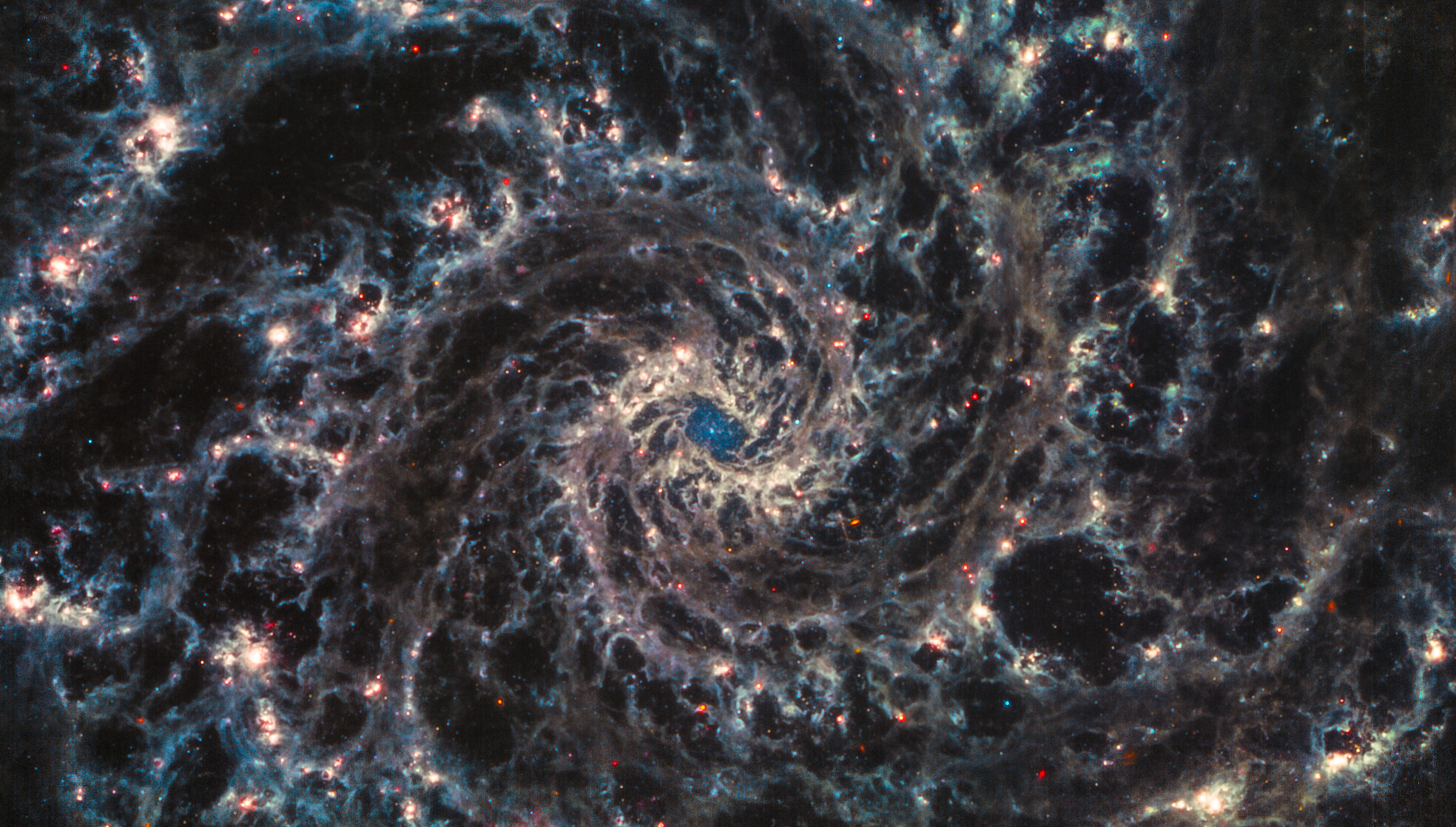
This JWST image of the Phantom Galaxy, formally known as NGC 628 or Messier 74, is dubbed the "perfect spiral" by some astronomers because the galaxy is so symmetrical.
The image was processed by Judy Schmidt using data JWST collected with its mid-infrared instrument (MIRI). The galaxy has been imaged multiple times before, using equipment like the Hubble Space Telescope and the Wide-Field Infrared Survey Explorer (WISE), but this JWST image shows the galaxy in a whole new light.
Read more: James Webb Space Telescope's stunning 'Phantom Galaxy' picture looks like a wormhole

JWST surprised scientists when it captured these images of six mature galaxies. The small reddish dots are galaxies from our universe's infancy, just 500 to 700 million years after the Big Bang. While such galaxies are not themselves surprising, astronomers found them to be shockingly big and the stars in them too old. The findings conflict with existing ideas of how the universe looked and evolved in its early years, and don't match earlier observations made by Webb's less powerful predecessor, the Hubble Space Telescope.
Read more: The James Webb Space Telescope discovers enormous distant galaxies that should not exist

When JWST set its sights on a target a little closer to home, astronomers were delighted with the results. This composite image of Jupiter was captured with the observatory's Near Infrared Camera (NIRCam) and shows the Jovian system in spectacular detail.
Here you can see beautiful auroras surrounding the poles and faint rings circling the gas giant. Two of Jupiter's moons are also visible: Amalthea is the bright dot on the far left, while Adrastea is the faint dot at the edge of the rings, between Amalthea and Jupiter.
Read more: Jupiter's auroras look radiant in new James Webb Space Telescope images
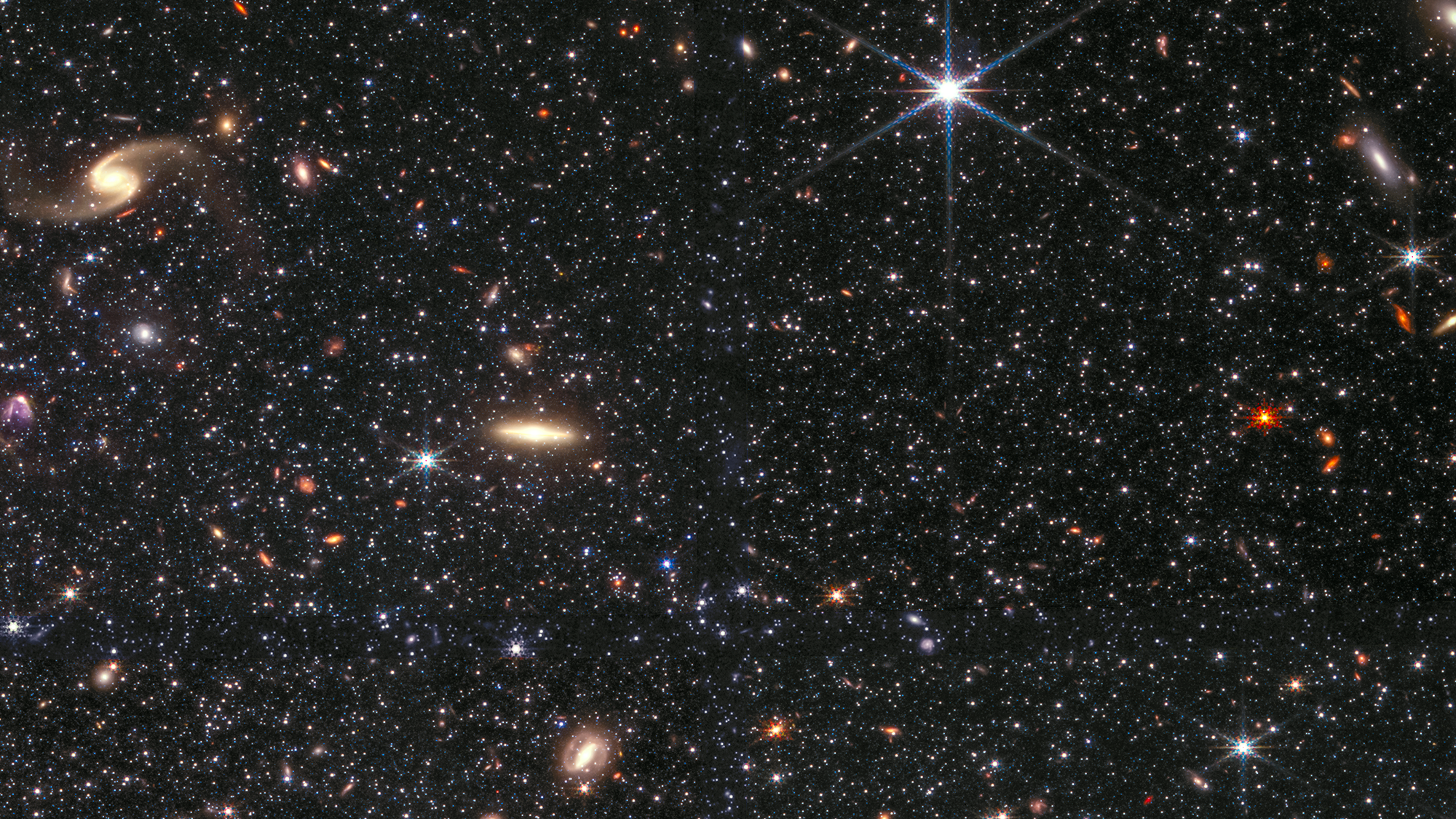
This star-studded image of a lonely dwarf galaxy named Wolf-Lunmark-Melotte (WLM) was captured by JWST's Near-Infrared Camera. WLM is an intriguing target for astronomers because it's one of the most remote members of the local galaxy group, which also contains our Milky Way.
Due to its isolated nature, WLM is unlikely to have interacted with other systems, making it a prime target for astronomers wanting to study and test theories of galaxy formation and evolution.
Read more: James Webb Space Telescope peers into lonely dwarf galaxy with sparkling results

JWST thrilled the scientific community once again when it turned its attention to Titan, the largest moon of Saturn. The observatory managed to capture Titan's thick methane clouds during observations on Nov. 4, 2022. One of the clouds (Cloud A) is located above Kraken Mare, the largest of Titan's hydrocarbon seas.
The scene was then observed a few days later by the Keck Observatory in Hawaii to understand how the clouds changed over time.
Read more: James Webb Space Telescope view of Saturn's weirdest moon Titan thrills scientists
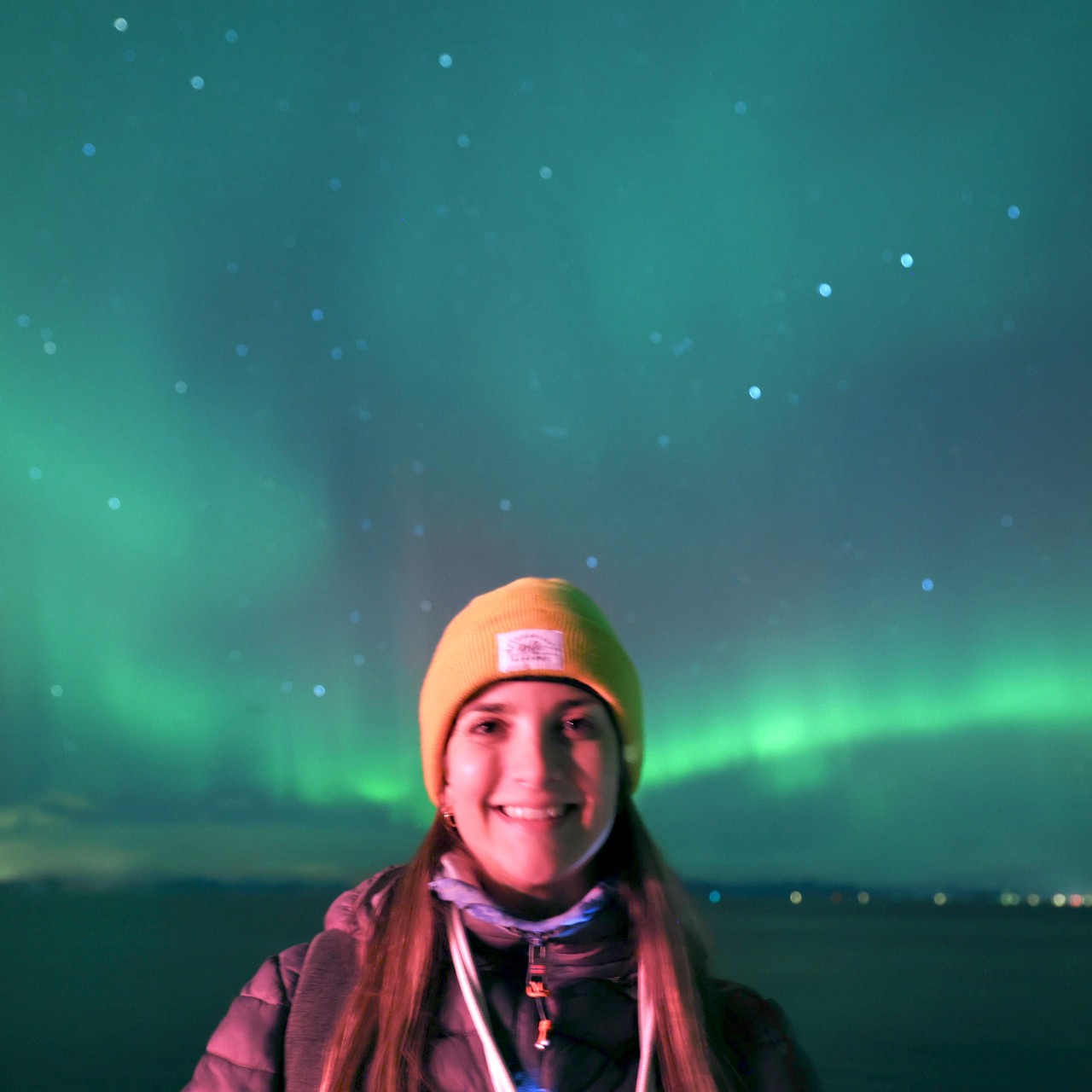
Daisy Dobrijevic joined Space.com in February 2022 having previously worked for our sister publication All About Space magazine as a staff writer. Before joining us, Daisy completed an editorial internship with the BBC Sky at Night Magazine and worked at the National Space Centre in Leicester, U.K., where she enjoyed communicating space science to the public. In 2021, Daisy completed a PhD in plant physiology and also holds a Master's in Environmental Science, she is currently based in Nottingham, U.K. Daisy is passionate about all things space, with a penchant for solar activity and space weather. She has a strong interest in astrotourism and loves nothing more than a good northern lights chase!
